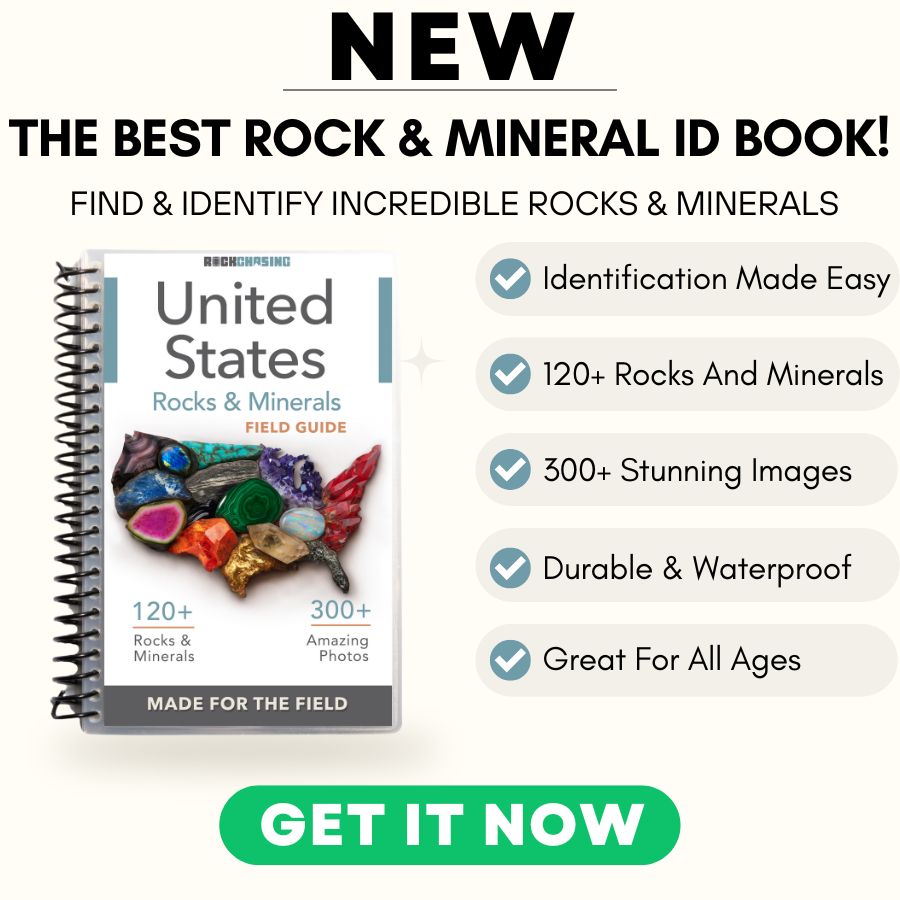Collecting amethysts in Washington state without the proper guidance can be challenging. These gorgeous gems are tucked away in remote locations, making it tricky to stumble upon them by chance.
Our team has scoured Washington State to unearth some fantastic options that will increase your chances of success. We’ve tapped into the wisdom of local geologists, rockhounding communities, and experienced treasure hunters to provide a comprehensive guide.
With detailed guides, insider tips, and a pinch of luck, you’ll be well-equipped to navigate the rugged terrain and uncover those elusive amethysts. So embrace the thrill of the hunt and let the magic of amethysts illuminate your world!
What is Washington Amethyst?
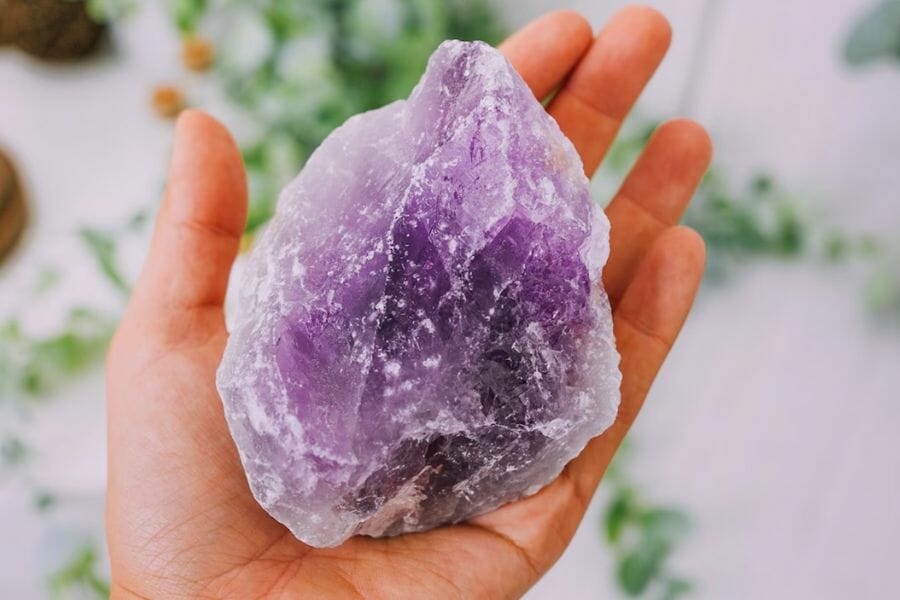
Amethysts are a sight to behold. Their rich, vibrant purple hues are like a mesmerizing dance of colors captured in stone. They have this magical ability to captivate your gaze and transport you to a realm of sheer beauty.
Whether you’re an avid collector or simply someone who appreciates the finer things in life, amethysts will surely leave you spellbound. From delicate jewelry pieces to more enormous, jaw-dropping specimens, these gemstones have an allure that’s hard to resist.
It might be worth a lot of money if you’re fortunate enough to find a perfect one. Even if you’re not in it for the money, it’s hard not to be enamored with amethysts since they are so beautiful. And because of the wealth of available information, anyone can efficiently conduct an amethyst search.The Different Types Of Amethyst And What They Look Like
Amethyst is a kind of quartz that forms in various geological settings, such as within volcanic rocks or in cavities of granites. These different environments contribute to the diverse appearances and types of this beautiful mineral.
The variety seen in amethyst is due to trace elements and impurities within the crystal structure. Elements like iron and manganese can alter the hue, leading to the beautiful spectrum of purples and other colors found in these crystals.
Brandberg Amethyst
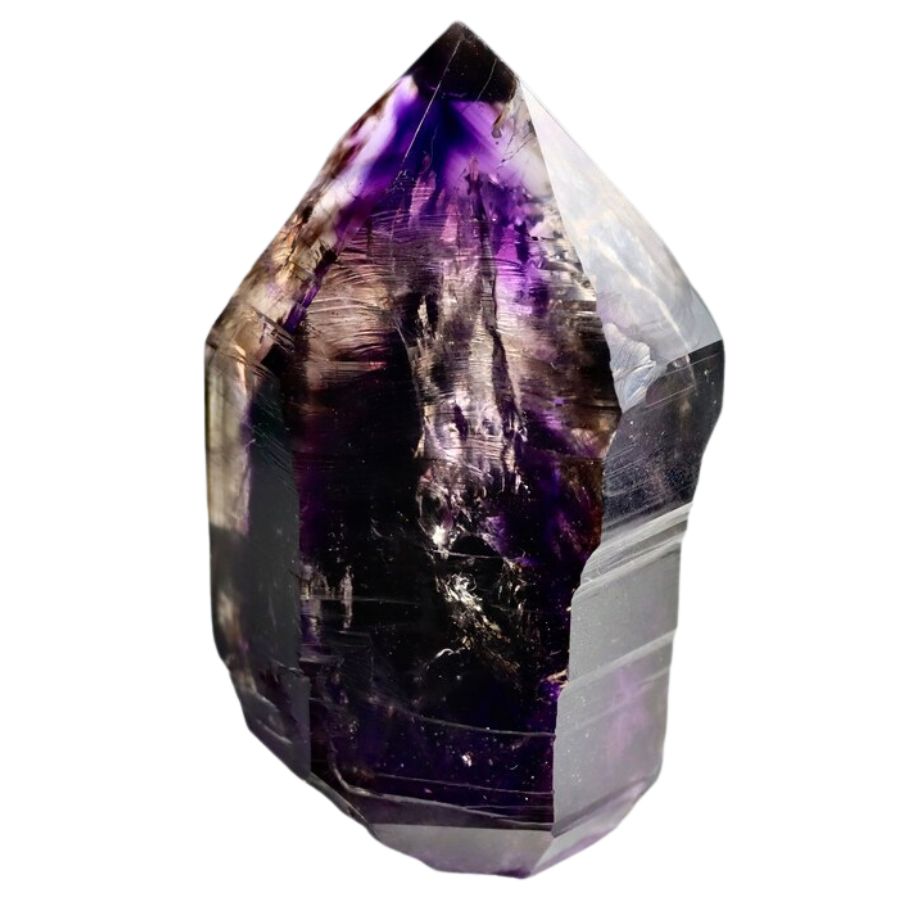
Brandberg amethyst is a captivating variety of quartz, renowned for its unique blend of elements like silicon dioxide, iron, and trace amounts of other minerals.
These components come together to form a crystal that not only holds geological significance but also showcases a striking array of hues and features.
The appearance of Brandberg amethyst is truly remarkable, characterized by its color range from deep purples to vibrant lilacs.
The varying shades are a result of the iron content within the crystal structure, which can fluctuate, leading to diverse color intensities and patterns in each specimen.
Brandberg amethyst stands out for its inclusion patterns and the presence of phantom crystals within its structure.
These internal “ghosts” are formed by layers of other minerals, offering a glimpse into the crystal’s growth history and adding to its allure for those fascinated by the wonders of the natural world.
If you want REAL results finding incredible rocks and minerals you need one of these 👇👇👇
Finding the coolest rocks in isn’t luck, it's knowing what to look for. Thousands of your fellow rock hunters are already carrying Rock Chasing field guides. Maybe it's time you joined the community.
Lightweight, mud-proof, and packed with clear photos, it’s become the go-to tool for anyone interested discovering what’s hidden under our red dirt and what they've already found.
Join them, and make your next rockhounding trip actually pay off.
What makes it different:
- 📍 Find and identify 140 incredible crystals, rocks, gemstones, minerals, and geodes across the USA
- 🚙 Field-tested across America's rivers, ranchlands, mountains, and roadcuts
- 📘 Heavy duty laminated pages resist dust, sweat, and water
- 🧠 Zero fluff — just clear visuals and straight-to-the-point info
- ⭐ Rated 4.8★ by real collectors who actually use it in the field
Ametrine
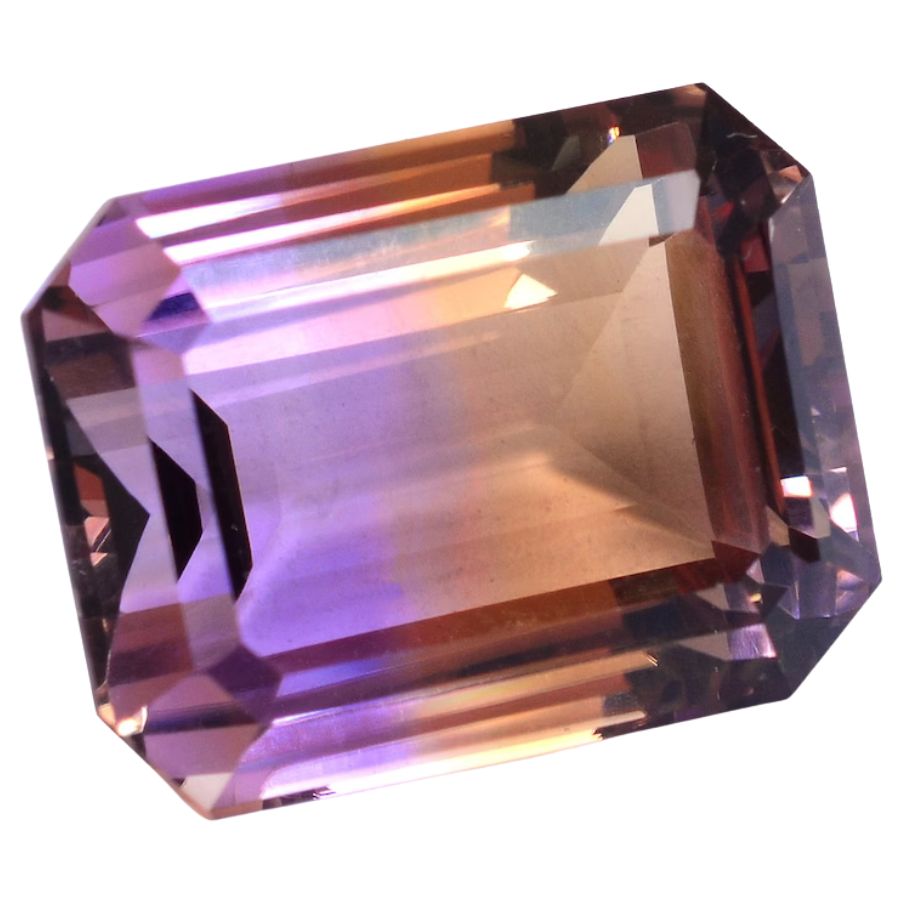
Ametrine is an intriguing mineral that captures the imagination of those interested in rocks and minerals. This unique gem is a combination of two quartz varieties: amethyst and citrine.
The beauty of ametrine lies in its striking coloration, which ranges from a blend of vibrant purple and golden yellow.
This color variation is a result of differing oxidation states of iron within the crystal, influenced by temperature and radiation exposure during formation.
Ametrine is notable for its distinct zoning of colors, where purple and yellow hues can be clearly seen in the same crystal. This feature, combined with its unique composition, sets ametrine apart from different kinds of amethyst.
Chevron Amethyst
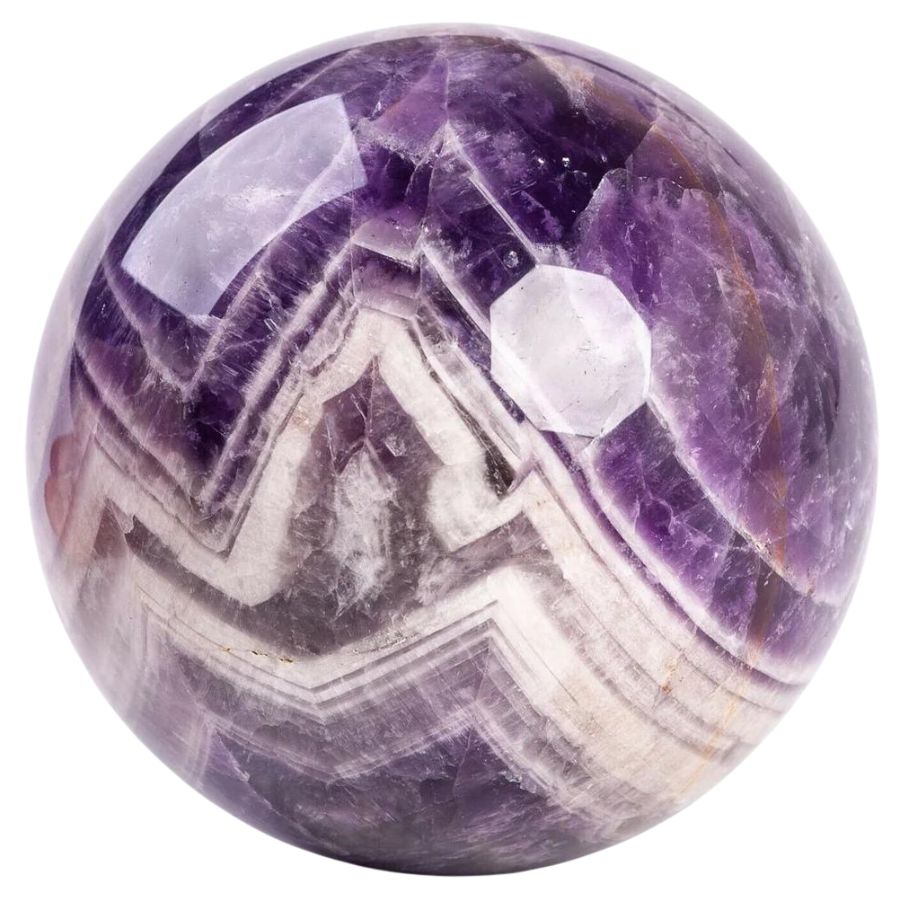
Chevron amethyst is a captivating type of amethyst known for its distinctive pattern. It’s easily recognized by its unique V-shaped or chevron patterns, which are a combination of deep purple and white or clear quartz layers.
These patterns and color variations are due to differences in iron content and other impurities in the layers, resulting in the striking contrast seen in chevron amethyst.
Chevron amethyst is not only beautiful but also a subject of interest for its formation process. The alternating layers of colors provide a visual record of the crystal’s growth history, making it a fascinating example for geological study.
Auralite
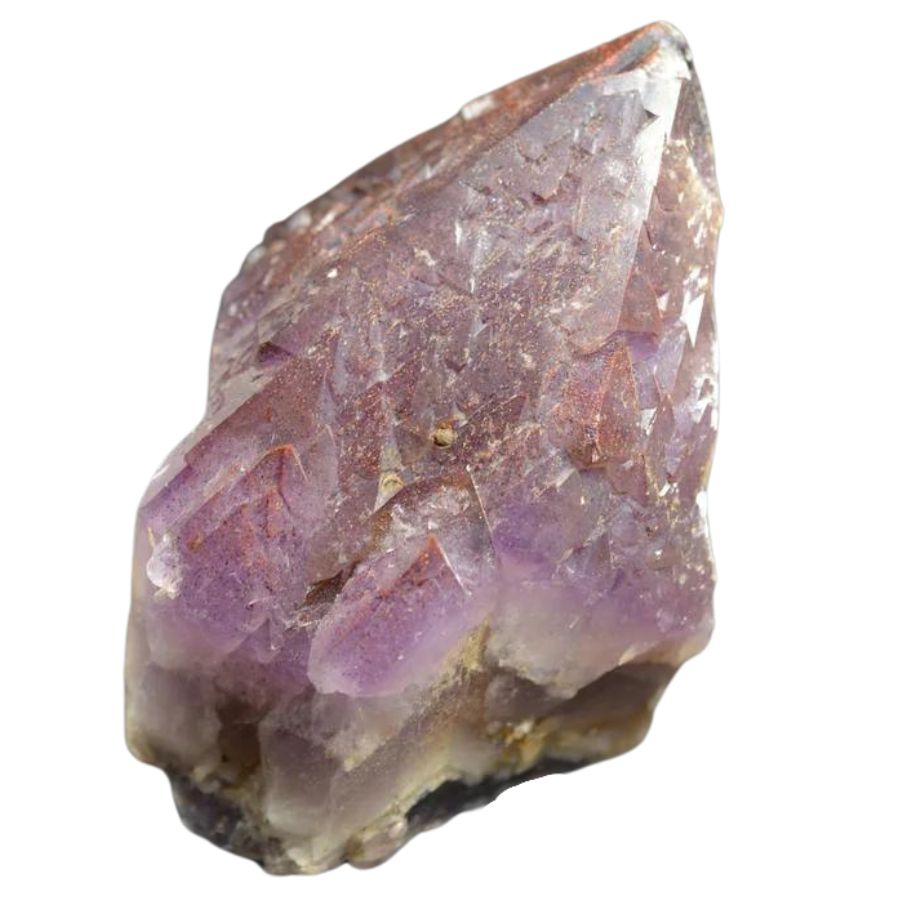
Auralite is an intriguing type of mineral that’s a combination of amethyst and several other trace minerals. Its composition includes silicon dioxide from amethyst, along with a mixture of elements like iron, copper, and titanium.
This mineral’s appearance is quite distinct, often showing a deep purple hue similar to what amethyst looks like, but with additional layers or inclusions of other colors.
These variations in color are due to the various trace minerals present in auralite, each contributing to its unique and colorful display.
A standout feature of auralite is the presence of multiple minerals within a single specimen, sometimes including up to 23 different types.
This mix not only gives auralite its diverse color range but also makes it a fascinating subject for those studying minerals and their properties.
Prasiolite
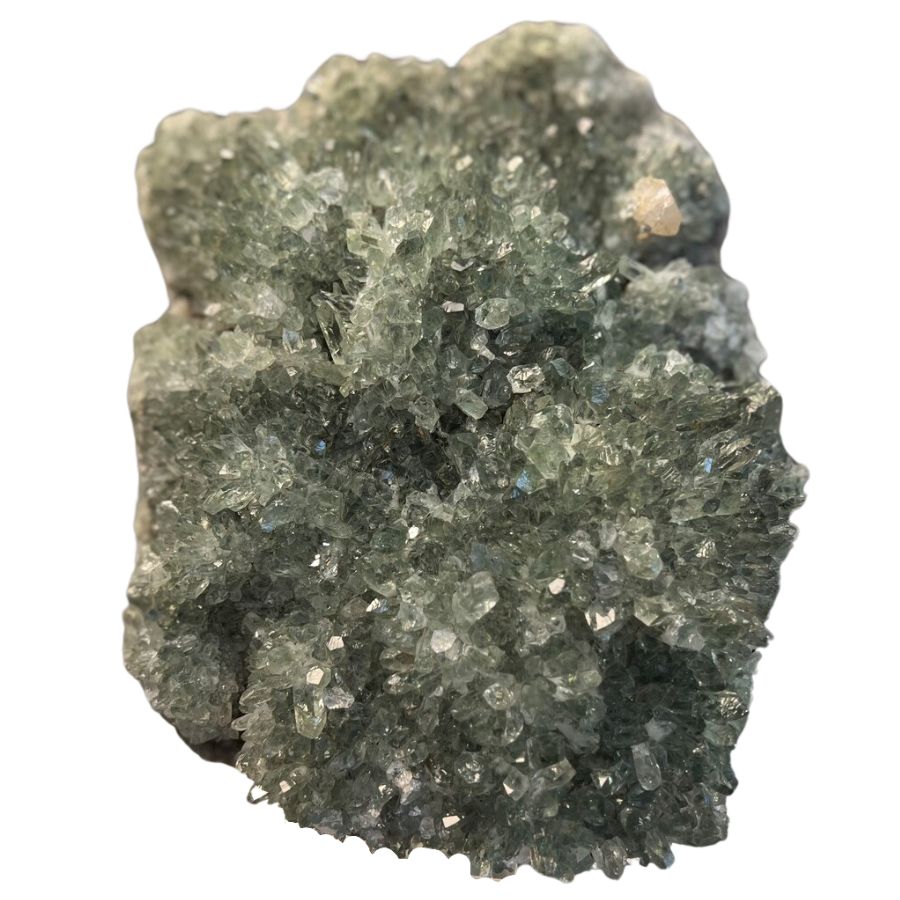
Prasiolite is an interesting variety of quartz. It often contains traces of iron, which play a key role in giving prasiolite its unique color.
This mineral is known for its beautiful green color, which can range from a light, almost transparent green to a deeper, more olive shade.
The green color of prasiolite is usually the result of heat treatment, either occurring naturally in the earth or artificially, transforming certain types of amethyst or yellowish quartz into prasiolite.
Naturally-occurring prasiolite is rare, as most available prasiolite is created through artificial means.
Cacoxenite amethyst

Cacoxenite is an intriguing mineral primarily composed of iron, aluminum, and phosphate, along with other elements like oxygen and hydrogen. This combination of elements gives cacoxenite its unique chemical makeup and properties.
Cacoxenite typically exhibits a striking golden-yellow to brownish-yellow color. This coloration is mainly due to the presence of iron in its structure, which imparts the rich hues that characterize this mineral.
A notable feature of cacoxenite is that it often forms as an inclusion within other minerals, such as amethyst, creating a beautiful contrast.
These inclusions of cacoxenite can appear as radiating or feathery formations, adding an intricate and fascinating aspect to the host mineral.
Where you can find cacoxenite amethyst
Cacoxenite amethyst can be found in the United States, Germany, and Brazil.
Phantom Amethyst
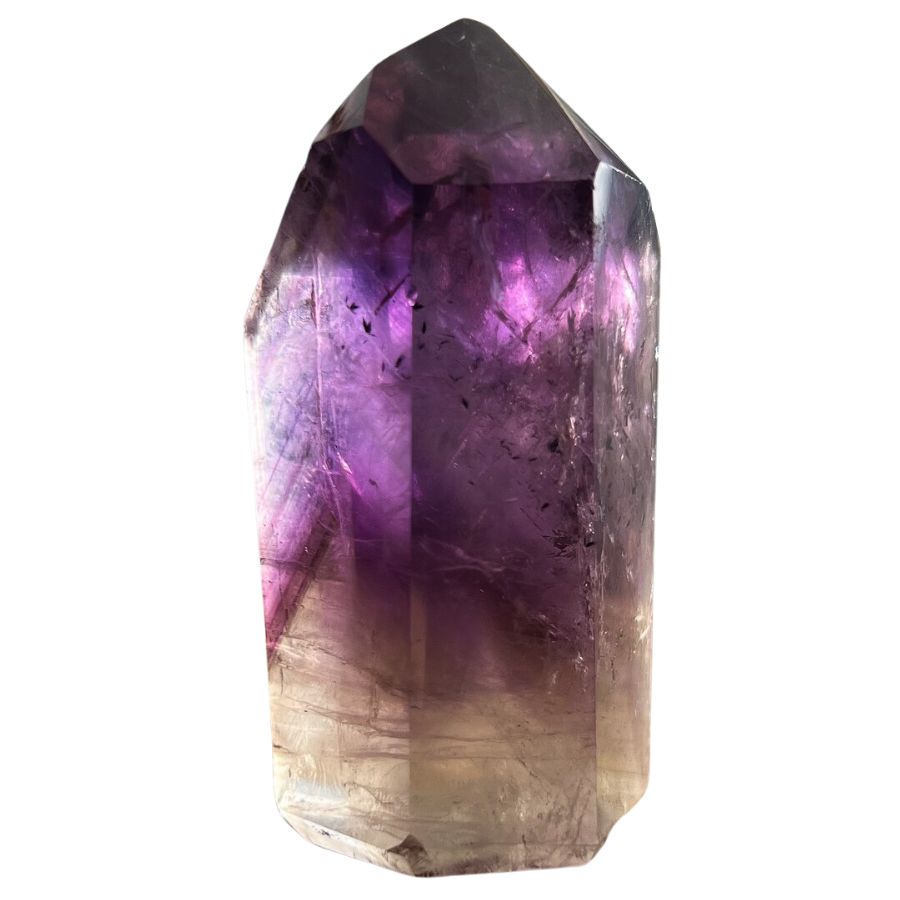
Phantom amethyst is a fascinating variety of amethyst. It stands out due to the presence of “phantoms” – ghost-like inclusions within its structure, which give it a distinct and layered look.
In phantom amethyst, one can observe a range of colors from deep purples to lighter hues, often appearing in layers or as phantom shapes within the crystal.
These color variations are typically due to trace amounts of iron and other minerals that get trapped during the crystal’s growth, influencing its final color.
Phantom amethyst provides a visual record of the crystal’s growth history. The crystal outlines and layers within the stone are formed by pauses in the crystal’s growth, offering a glimpse into geological processes over time.
Where you can find phantom amethyst
There are notable sources of phantom amethyst in Brazil, Madagascar, and the United States. In the United States, phantom amethyst is often discovered in states like Arizona, North Carolina, and Colorado.
Pink Amethyst
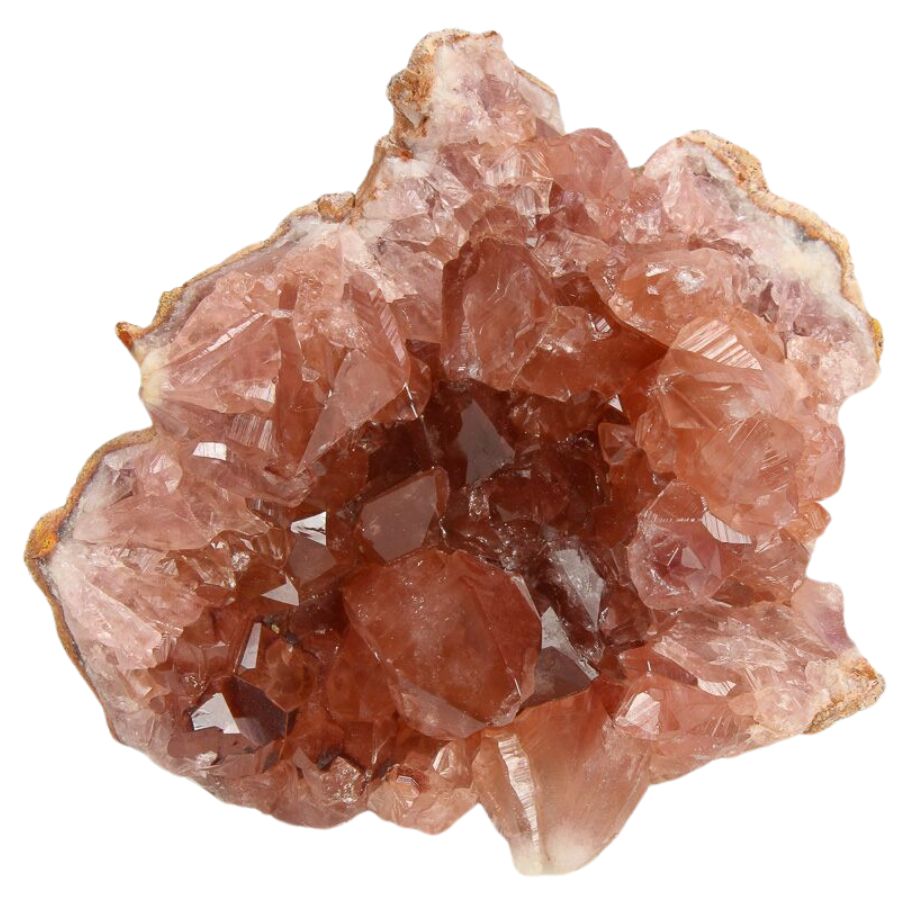
Pink amethyst is a unique and relatively rare variety of the common mineral amethyst. The presence of trace elements, particularly iron, contributes to its distinct pink hue.
The appearance of pink amethyst ranges from a delicate, light pink to a deeper, more vivid pink.
This variation in color is largely due to the concentration and distribution of iron within the crystal, which affects how light interacts with the mineral.
Pink amethyst is its often found in geodes or clusters, where multiple crystals grow together in a captivating display.
Amethyst Geodes
Amethyst geodes are fascinating natural formations, with traces of iron giving them their famous purple color. These geodes form in volcanic rocks and are essentially hollow, lined with amethyst crystals.
A key feature of amethyst geodes is their crystal-lined cavity, which creates a stunning natural display. When you look inside an amethyst geode, you’ll see a range of purple hues, from light lavender to deep violet.
The color variation is due to the amount of iron and the specific conditions under which the crystals formed, such as temperature and the presence of other trace elements.
Geodes can vary greatly in size, from small enough to fit in your hand to large enough to stand in, and each one is unique in its crystal formation and color pattern.
Where you can find amethyst geodes
Amethyst geodes are commonly found in Brazil and Uruguay. In the United States, they can also be found in places like Arizona and Oregon.
Cactus Amethyst
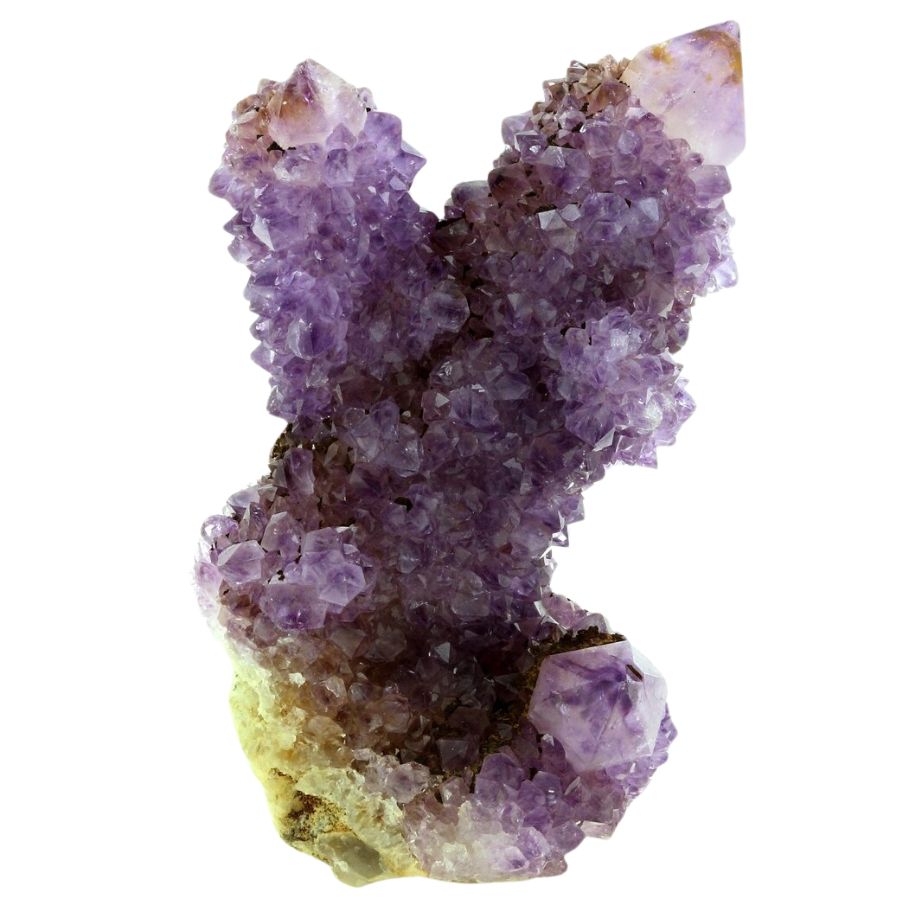
Cactus amethyst is also known as spirit quartz. Its unique structure is enriched with additional minerals, which contribute to its distinctive appearance.
This type of amethyst is characterized by a central quartz crystal covered in smaller crystal growths, giving it a spiky, cactus-like appearance.
The color ranges from pale lilac to deep purple, with the variations largely influenced by the amount of iron and other trace elements within the crystals.
A notable feature of cactus amethyst is the way the smaller crystals radiate outward from the central crystal.
This formation not only creates a stunning visual effect but also makes each piece of cactus amethyst a unique and fascinating specimen.
Regarding the price of amethyst, it can vary significantly based on the size, quality, and depth of color. While smaller, less vibrant pieces are relatively affordable, larger specimens with deep, rich colors can be quite valuable.
Scepter Amethyst
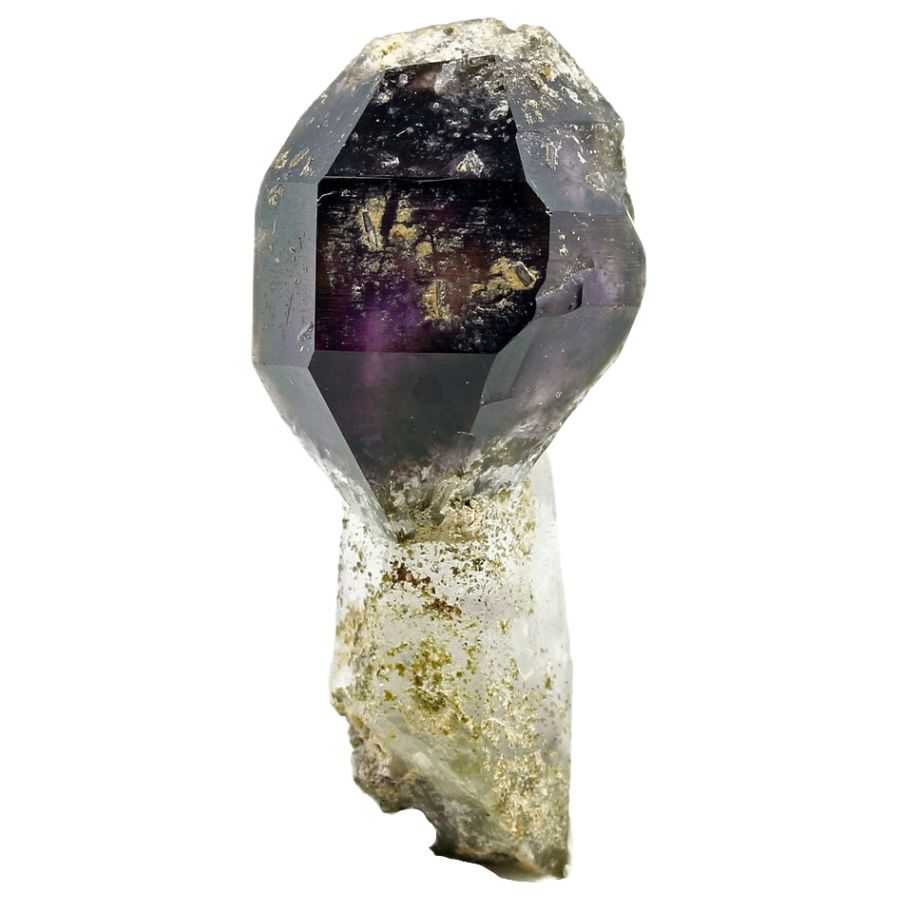
Scepter amethyst gets its name from its distinctive scepter-like formation, where a larger crystal cap sits atop a smaller crystal stem.
The color variations in scepter amethyst are influenced by the amount of iron and other trace elements within the crystal, coupled with the specific conditions under which it formed.
A key feature of scepter amethyst is its symbolic scepter shape, representing a crystal formation process where a second phase of growth occurs on an already-formed crystal base. This creates a striking and regal scepter-like appearance.
Where you can find scepter amethyst
Scepter amethyst can be found in several locations around the world, with notable spots including Brazil, Madagascar, and Zambia.
In the United States, areas like Washington State and North Carolina are also known for their scepter amethyst discoveries.
Smoky Amethyst
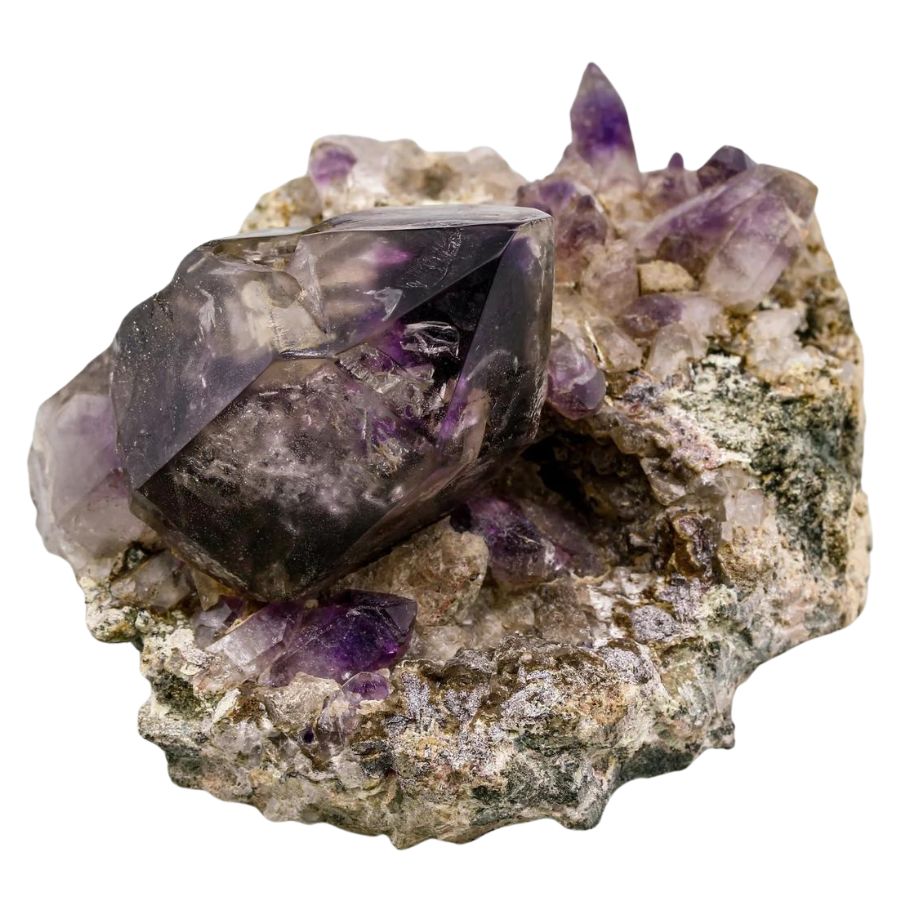
Smoky amethyst is a unique variation among amethyst types that combines features of both smoky quartz and amethyst. The presence of trace elements like iron and aluminum gives it its unique coloration.
This mineral exhibits a blend of smoky brown and purple hues, creating a captivating visual effect. This is due to natural irradiation and the varying amounts of impurities, which influence the depth and intensity of both the smoky and purple colors.
A notable feature of smoky amethyst is its dual-tone
- The deep experience and understanding of our team about the area
- Recommendations from local groups and clubs
- How easy it is to get the a particular location
- Safety and potential hazards when collecting
- Weighing private and public locations
- The ability for both experienced and novice amethyst enthusiasts to find great samples
With these factors in mind we’ve been able to put together a fantastic list that just about anyone can use!
The Best Spots To Find Amethyst in Washington

Below is a list of the most excellent places to look for amethyst in the state. Although there are many unusual locations to find gems in Washington, only a few are great for finding amethyst crystals.
Always Confirm Access and Collection Rules!
Before heading out to any of the locations on our list you need to confirm access requirements and collection rules for both public and private locations directly with the location. We haven’t personally verified every location and the access requirements and collection rules often change without notice.
Many of the locations we mention will not allow collecting but are still great places for those who love to find beautiful rocks and minerals in the wild without keeping them. We also can’t guarantee you will find anything in these locations since they are constantly changing.
Always get updated information directly from the source ahead of time to ensure responsible rockhounding. If you want even more current options it’s always a good idea to contact local rock and mineral clubs and groups
Abernathy Peak
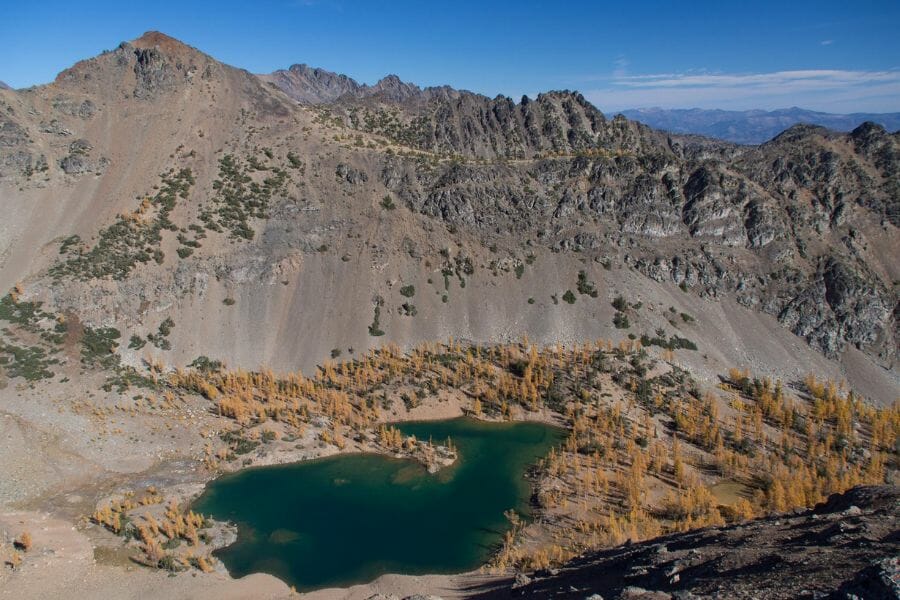
Abernathy Peak, nestled in the breathtaking landscapes of Washington state, is a prime location for amethyst enthusiasts to embark on their quest for these stunning gemstones. Situated in the rugged Cascade Range, this majestic peak offers an irresistible combination of geological wonders and untamed beauty.
Abernathy Peak boasts a geological composition that is conducive to the formation of amethysts. The region is blessed with volcanic activity that occurred millions of years ago, leaving behind a rich tapestry of rocks and minerals.
These volcanic eruptions created the perfect conditions for amethysts to thrive, as molten lava interacted with silica-rich solutions, giving birth to these beautiful purple crystals.
Ensure you know the most recent Washington state collecting laws and restrictions before bringing your amethyst crystals home.
Where we found amethyst at Abernathy Peak
Amethysts can be found in the rocky slopes and outcrops surrounding the peak. These rugged surfaces, formed by ancient volcanic activity, offer a promising hunting ground for amethyst enthusiasts. The molten lava interacted with silica-rich solutions, creating pockets and veins where amethyst crystals could form and flourish.
If you want REAL results finding incredible rocks and minerals you need one of these 👇👇👇
Finding the coolest rocks in isn’t luck, it's knowing what to look for. Thousands of your fellow rock hunters are already carrying Rock Chasing field guides. Maybe it's time you joined the community.
Lightweight, mud-proof, and packed with clear photos, it’s become the go-to tool for anyone interested discovering what’s hidden under our red dirt and what they've already found.
Join them, and make your next rockhounding trip actually pay off.
What makes it different:
- 📍 Find and identify 140 incredible crystals, rocks, gemstones, minerals, and geodes across the USA
- 🚙 Field-tested across America's rivers, ranchlands, mountains, and roadcuts
- 📘 Heavy duty laminated pages resist dust, sweat, and water
- 🧠 Zero fluff — just clear visuals and straight-to-the-point info
- ⭐ Rated 4.8★ by real collectors who actually use it in the field
Denny Mountain
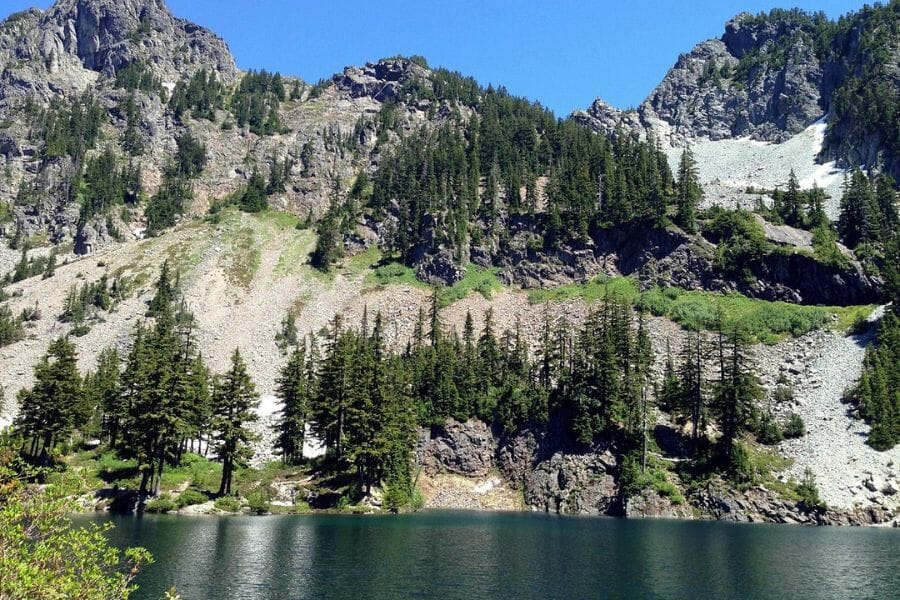
Denny Mountain boasts a unique geological composition that sets the stage for amethyst formation. The region’s volcanic history, characterized by ancient lava flows and volcanic activity, provides the ideal conditions for creating these alluring purple crystals.
As molten lava interacted with silica-rich solutions, it formed amethyst pockets and veins within the rocky landscapes of Denny Mountain. The mountain’s diverse terrain, featuring rocky slopes, scree fields, and exposed outcrops, provides ample opportunities to explore and discover hidden amethyst specimens.
Where we found amethyst at Denny Mountain
Keep an eye on the fields scattered throughout Denny Mountain. These areas, comprised of loose rocks and debris, can serve as hotspots for amethyst discoveries. As erosion occurs and rock fragments shift, it can reveal amethysts once concealed beneath the surface. The current amethyst value can be found in this guide we’ve created.
Rock Creek
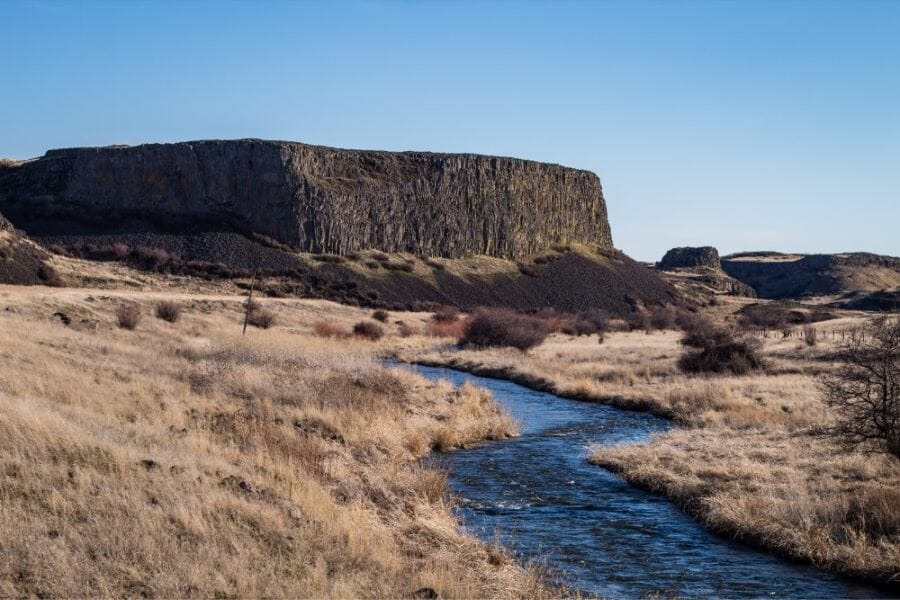
Rock Creek presents an enticing opportunity for amethyst enthusiasts searching for these captivating gemstones. This charming creek, flowing through the region’s rugged terrain, holds the potential for amethyst discoveries.
The surrounding area boasts a rich volcanic history, which played a significant role in forming amethysts. As ancient volcanic activity interacted with silica-rich solutions, it created favorable conditions for the growth of these exquisite purple crystals.
Where we found amethyst at Rock Creek
You can find amethysts in the gravel beds and banks of the creek itself. Natural processes like erosion and sediment transport have carried amethysts downstream, depositing them in these areas.
Spray Park
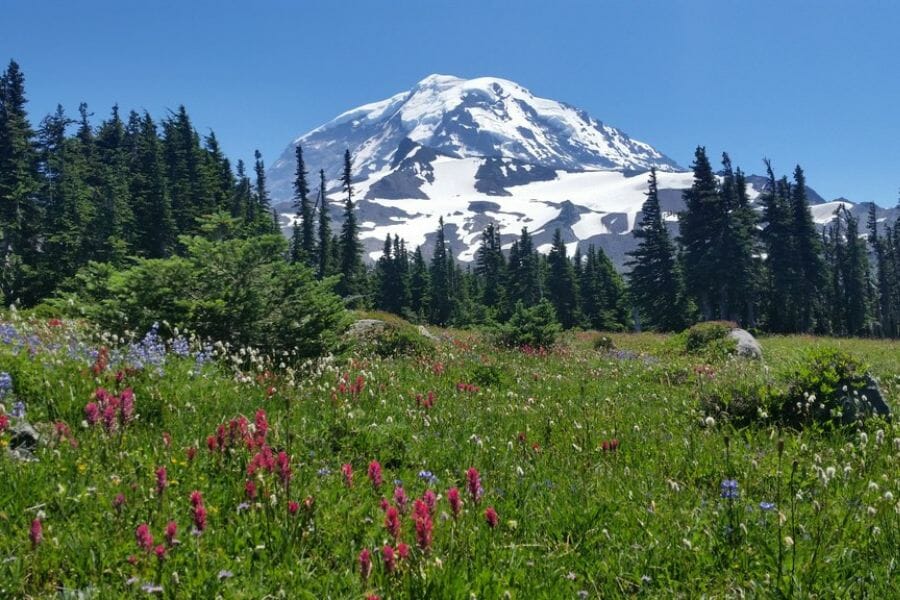
The natural beauty and accessibility of Spray Park make it an excellent location for amethyst enthusiasts. The park offers picturesque hiking trails through alpine meadows, lush forests, and rocky landscapes. This allows you to explore the area and search for amethysts amidst the scenic surroundings.
The combination of awe-inspiring vistas and the excitement of amethyst hunting creates a truly memorable experience. Immerse yourself in the natural wonders of Spray Park, and let the hidden beauty of amethysts reveal itself to you in this enchanting corner of Washington state.
Where we found amethyst at Spray Park
Pay close attention to the gravel and sediment within Spray Park’s streams and creeks. Over time, natural processes have carried amethysts downstream, depositing them in these waterways’ gravel beds and banks.
Walker Valley

Walker Mountain’s remote and untouched nature adds an allure to the amethyst-hunting experience. Away from the bustling crowds, this serene mountain offers a tranquil escape for seekers of these precious gems.
The rugged terrain, dotted with rocky outcrops, scree fields, and hidden nooks, presents a challenging yet rewarding adventure for those determined to uncover amethyst treasures.
Where we found amethyst at Walker Mountain
Exploring the creek beds and drainage areas on Walker Mountain can prove fruitful. Amethysts can be transported by water flow and deposited in these locations. You can also search the rocky outcrops and cliffs on the mountain’s slopes. These geological formations provide potential pockets and veins where amethyst crystals may have formed.
Other Great Places To Mine For Amethyst in Washington
Our recommendations by county
Although we’ve already listed some of the most incredible places to look for amethyst crystals in Washington State, there are still plenty more that we can recommend. To make things easier, we’ve sorted them by county below.
| County | Location |
| King | Denny Gulch |
| King | Hansen Creek |
| King | Spruce Ridge |
| Kittitas | Crystal Mountain |
| Pierce | Siegmund Ranch |
| Skamania | Dog Mountain |
Additional areas you can find amethyst
Washington is a large state, so we want to ensure your search is effective. It’s essential to search and pay attention to specific amethyst sites.
Rivers and riverbanks
Rivers and riverbanks are undoubtedly exceptional locations for amethyst collectors to uncover the treasures they seek. These busy waterways hold a special allure for amethyst enthusiasts due to the geological processes that occur along their paths. As rivers flow through diverse landscapes, they act as natural agents of erosion, carving their way through rocks and sediment.
The continuous flow of water is a crucial factor contributing to the accumulation of amethysts in riverbeds. As the river current interacts with various geological formations, it dislodges loose rocks and minerals, including amethyst crystals.
Roadcuts
Roadcuts, those intriguing slices through hillsides and mountainsides created during road construction or maintenance, hold immense appeal for amethyst collectors searching for these captivating gemstones.
These man-made exposures offer a unique opportunity to glimpse the geological wonders hidden beneath the surface. Roadcuts provide a window into the Earth’s layers, exposing a cross-section of rocks and minerals, including amethysts, that would otherwise remain concealed.
Streams and creeks
Streams and creeks are enchanting havens for amethyst collectors searching for these exquisite gemstones. These flowing waterways weave through diverse landscapes, offering a unique opportunity to discover hidden treasures. The geological processes in these aquatic environments make them prime locations for finding amethysts.
The constant motion of the water plays a role in the shaping and polishing of amethysts. The flowing water gradually wears down the rough edges of these crystals, enhancing their natural beauty and making them more visually appealing to collectors.
Common Amethyst-Hunting Questions
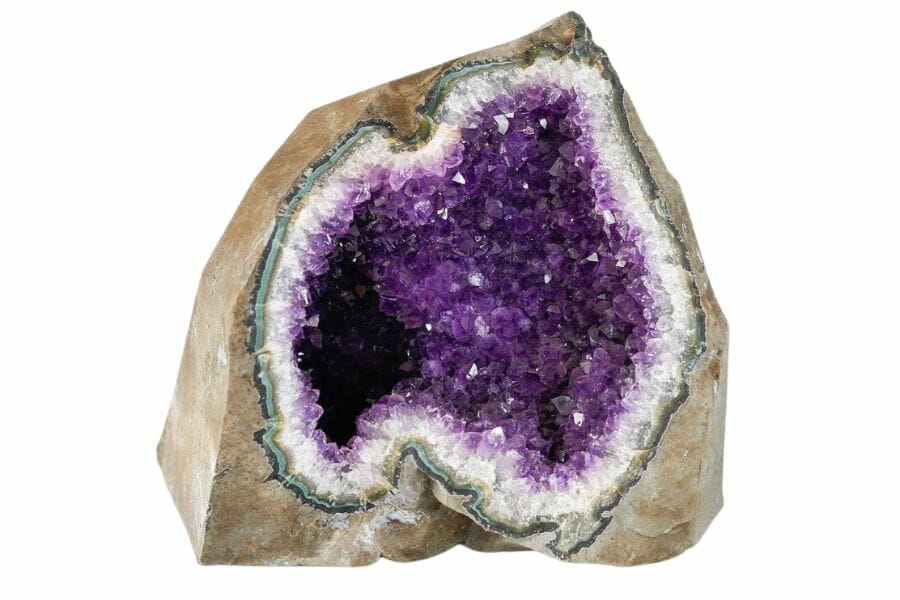
The following frequently asked questions regarding amethysts in Washington should be addressed.
Where can you find amethyst geodes in Washington?
Even though amethyst geodes aren’t prevalent here, Washington state has many rock shops where you can purchase a range of amethyst specimens.
Is it illegal to collect amethyst in Washington?
In Washington, collecting amethyst is permitted if you abide by the restrictions. Respect any laws in force if you’re in a public area. Be sure you have permission if you’re on private property.
The Best Places To Buy Amethyst In Washington
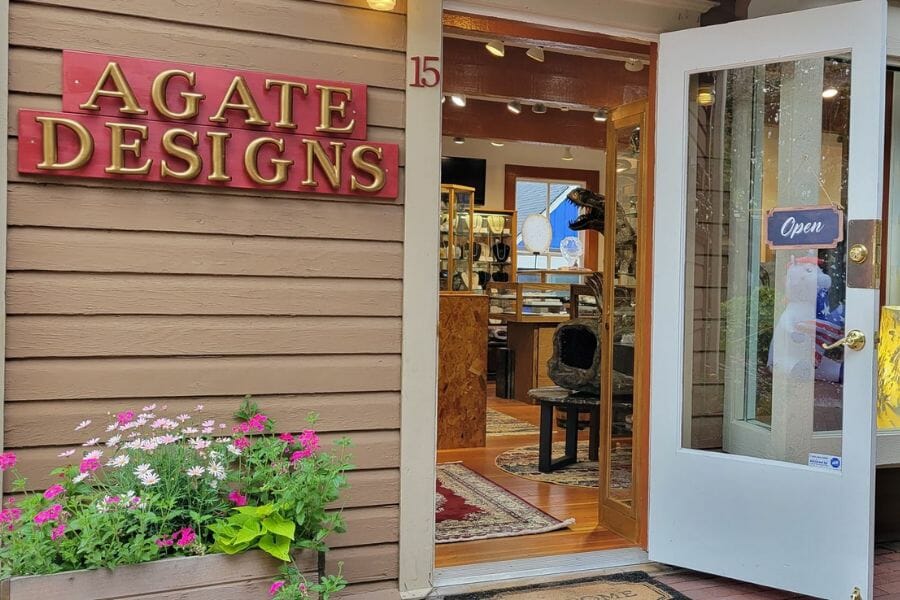
Not everyone enjoys spending the entire day in the woods looking for amethysts. Sometimes all you need is a display piece or collecting item. Below is a list of rock shops where you can buy amethyst crystals.
- Agate Designs – 317 NW Gilman Blvd #15, Issaquah, WA 98027
- Crystallography Gems – 650 S Orcas St #218, Seattle, WA 98108
- Earlight Rocks and Gems – 7713 Center Blvd SE #180, Snoqualmie, WA 98065
- MJ Rocks and Gems – Temporarily located at the Everett mall, 16128 356th Ave SE, Sultan, WA 98294
- Wild Earth Rocks – 11607 State Route 302 NW, Suite B, Gig Harbor, WA 98329
Additional places to find amethyst in nearby states
Once you’ve visited each of the locations we mentioned above, visit the guides we created for our recommended areas to find amethyst in the bordering states:
If you have any recommendations for our list, please leave a comment below!



